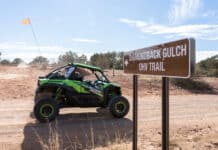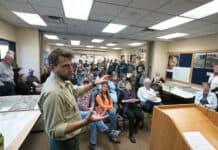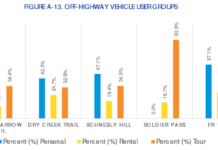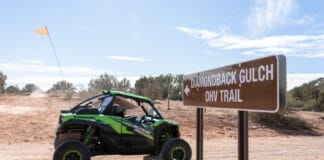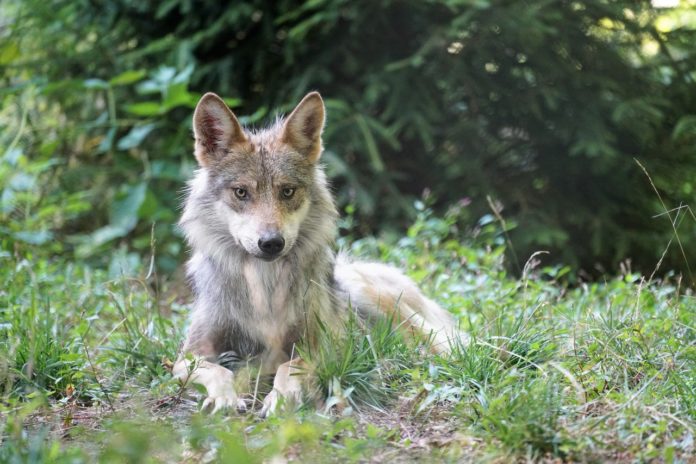
Amid extreme fire danger, multiple active fires and official forest closures, U.S. Forest Service officials have largely emptied the now-closed Coconino and Kaibab National Forests, but somewhere on the Colorado Plateau above Sedona, a 1-year-old endangered male Mexican wolf named Anubis is roaming.
And he’s likely to be left alone by wildlife officials as long as local national forests remain closed due to fire danger.
In June, three seventh-graders named wolf m2520, as he is known to wildlife agencies, Anubis, after the canine-headed Egyptian god of death and the underworld.
If the students had known about Anubis’ current situation, they might have dubbed him “Odysseus,” after the wandering and crafty warrior of Greek myth.
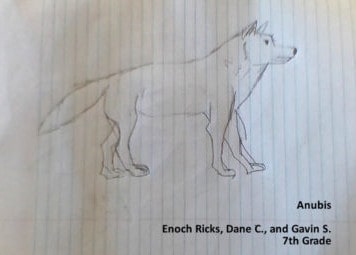
The yearling m2520 was captured and fitted with a radio collar this winter in New Mexico. Then in April, he started dispersing west out of the Mexican Wolf Experimental Population Area and eventually settled around Flagstaff and Williams, where he has been hanging out for an unusually long time.
Anubis’ story is also unusual because his dispersal is coinciding with extreme heat and a rare forest closure. These factors have complicated Arizona Game & Fish’s plan to capture and relocate him to eastern Arizona, where the agency hopes he will find a mate and settle.
Last week, Anubis evaded the Arizona Game & Fish Department’s first attempt at capture with a helicopter and ground personnel.
Jim DeVos, assistant director of wildlife management at Arizona Game & Fish, said that operation was complicated by the extreme heat at the time. He said the agency will try again when the resources can be organized again.
Dispersing is natural for young wolves. Anubis is traveling alone away from his birth pack in search of other wolves. He has wandered 400 miles from his family, the Dark Canyon pack in New Mexico, where he was born in the spring of 2020.
Emily Renn, executive director of the Grand Canyon Wolf Recovery project, said Anubis is not one of the captive-born pups placed into dens in 2020 — the cross fostering effort Sedona pilot Mike Schroeder assisted with — he’s wild born.
DeVos said Arizona Game & Fish, which manages Mexican wolves in partnership with federal and New Mexico state agencies, believes it’s time to relocate Anubis to eastern Arizona, where he will be safer from human interactions and more likely to find a mate.
DeVos said the agency has tracked the radio-collared wolf passing close to homes at times, and he is worried about the wolf becoming habituated to people, which increases the risk to the wolf.
“The closer to people they are, the more likely they are to be harmed,” he said. “It’s just too close to homes, too close to highways.”
Several wolves that have dispersed to the Flagstaff area in recent years have been struck by cars on the highway or shot, which if found to be intentional, can land the shooter in prison, since Mexican wolves are still protected animals.
We don’t know a lot about what Anubis has been up to. DeVos said he has been detected scavenging on elk, and he “has moved quite a bit.”
Renn has also been keeping tabs on Anubis since April, when she noticed an orange polygon on the USFWS’ Wolf Location Public Information Map unusually far west along the Mogollon Rim.
The USFWS protects the exact locations of the wolves by making each polygon a generalized area of 2,000 acres, and the information is only updated every two weeks.
Since wolves can travel 50 to 60 miles a day, Renn said, the public information is not particularly useful for finding a wolf, but it does let the public know where roughly wolves are located.
Renn said she has never seen a radio-collared wolf linger in the area this long since they were reintroduced in the wild.
“Interestingly, now he seems to have been staying in this roughly 30-mile area north of I-40” based on public information, Renn said.
Why is Anubis hanging out this far west when there aren’t other known wolves around? What will he do next?
That’s not well known to biologists. Renn said there’s a theory that wolves that disperse outside the recovery area to Flagstaff move back to the recovery area when they don’t find a mate, but it’s just a theory.
Some uncollared wolves have dispersed north of Sedona in year’s past, but without radio collars, “they are phantoms in the woods,” DeVos said. “We don’t know their fate.”
If there weren’t recovery plan rules restricting the wolves to territory below Interstate 40, Anubis might eventually connect with another dispersing wolf and start a new pack in the area.
But, Anubis could also be killed by cars or people, as at least four dispersing wolves have in past years, according to Renn.
Still, Renn hopes officials will use the forest closure to try something different: Just leave the wolf alone and watch it to learn more about Mexican wolf behavior.
“It’s just such a valuable research opportunity,” Renn said. “It sounds like he has been very good at being secretive and hasn’t caused any issues so far.”
DeVos said that Arizona Game & Fish has already been watching Anubis for eight weeks now, and he thinks it’s time to get the wolf back to an area away from people and closer to companions.
But those plans will be on hold for now. Brady Smith, public affairs officer for Coconino National Forest, said Thursday that Coconino NF would not be issuing special authorizations for wildlife managers to enter the forest to capture the wolf during the forest closure.
“I hope he’s super clever, avoids all people, livestock and traps for as long as possible,” Renn said.



